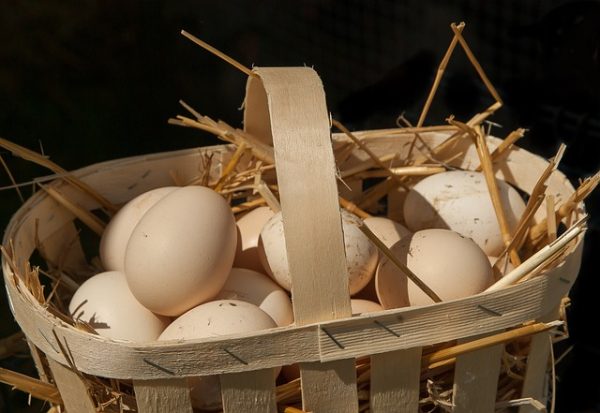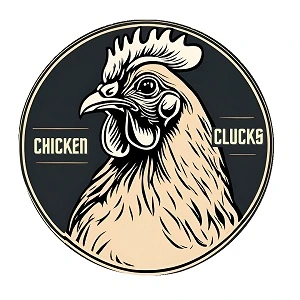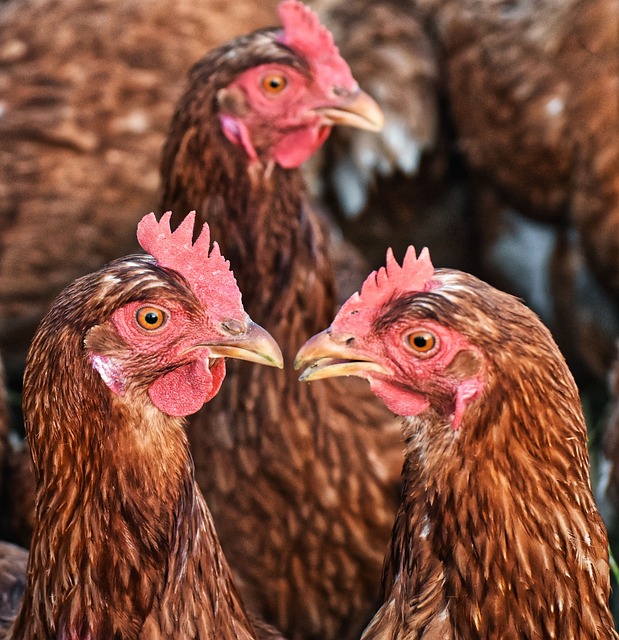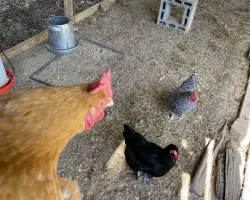Starting your own backyard chicken flock is a rewarding experience, especially when you choose the best chicken breed! This guide helps you pick the perfect chickens for your needs. Whether you want fresh eggs, tasty meat, beautiful show birds, or simply enjoy caring for these lovely animals, we’ve got you covered. Learn how to determine your needs and explore popular chicken breeds to find the best fit for your backyard flock. Selecting the best laying hens is not only about the number of eggs. Let’s dive in and discover the wonderful world of chicken keeping!
Tip: Before diving in, ask yourself these questions first.
Do your research and discover different chicken breeds
With over 1,600 chicken breeds worldwide, making a choice can feel overwhelming. Here’s a quick breakdown of the main types to consider:
Hybrids
Hybrids are popular among backyard chicken keepers because they’re bred for productivity. Popular hybrids are Rhode Island Hybrids, Blacktails, White Leghorn, Blackrock and Goldline. Commercial breeds used for professional farming are also hybrids. For example, the ISA Brown, Lohmann Brown, ISA White and Hy-Line Brown, known for laying nearly and egg per day (over 300 eggs per year). They efficiently use feed, making them sustainable. Also, they tend to go broody less often. Weighing between 4 to 6 pounds (2-3 kg), they have friendly personalities and come in various colors, allowing for a vibrant flock mix. Other non-commercial hybrids, like Easter Eggers, Olive Eggers, and Sex-Links, produce fewer eggs but bring other unique traits like colorful eggs.
Purebreds
Purebred chickens come in many varieties and always breed true, meaning their young resemble their parents. Each breed has a club that establishes standards. These clubs are affiliated to the American Poultry Association or the Poultry Club of Great Britain. Purebreds come in stunning colors and feather types. They often have strong maternal instincts, making them suitable for breeding. Popular purebreds that lay many eggs (250 or more per year) are Rhode Island Red, Leghorn, Plymouth Rock, Sussex and Australorp. Show favorites, like Silkies, Polish, Cochins and Orpingtons, aren’t as prolific in egg-laying but are prized for their unique looks and personalities. Purebreds are available in standard and bantam sizes, fitting well in various backyard setups.
Bantams
Bantams are miniature chickens, such as the Silkie Bantam and Dutch Bantam, weighing around 2 pounds (1 kg). These small chicken breeds are ideal for small gardens or limited spaces, require less food and produce smaller eggs. Bantams add a charming, compact touch to any backyard flock.
Remember, there are many different chicken breeds worldwide. Each type and breed of chicken brings something unique to your backyard, so think about your priorities!
Know your purpose to find the best chicken breed
The first step in selecting your chicken breed is understanding why you want to keep them. Different breeds have different traits, and your flock should align with your main goal.
- Eggs: Let´s assume fresh eggs are your priority. Breeds like Rhode Island Red, Leghorn, and ISA Brown are ideal, laying 250+ eggs annually in colors from brown to white. The best egg laying chickens are often the commercial breeds (hybrids, like ISA Brown) used on professional farms.
- Meat: If you’re more interested in meat chickens, you’ll need heavier breeds like the Cornish Cross or Brahma. Commercial meat breeds used by professional farms are bred for size and fast growth, such as Cobb 500 or Ross 308. Keep in mind that meat breeds may lay fewer eggs.
- Dual-purpose: Not sure whether you want chickens for eggs or meat? Dual-purpose breeds, like Plymouth Rocks and Orpingtons, provide a good egg supply and can also be used for meat.
- Shows: If you’re more interested in keeping chickens for their appearance or to show them, breeds like Silkies or Polish are beautiful, although they aren’t always the best layers.
select the best laying hens by comparing performance traits

When it comes to selecting the best egg laying chickens, not all chickens are created equal. It’s important to know the amount of eggs, egg size and egg shell color you can expect based on the breed you choose:
- Egg amount: breeds like the Leghorn, Australorp, Rhode Island Red and Sussex can lay 250 up to more than 300 eggs a year.
- Egg size and weight: Generally speaking, the larger the chicken the larger the egg. Consider what size of eggs you prefer for your kitchen. However, keep in mind that egg weight also depends on the amount and type of feed eaten.
- Egg color: Although it doesn’t affect the taste or nutritional value, some people have a preference for a certain color of egg shell. Most chicken breeds lay white or light brown eggs. Some breeds lay eggs with more special colors. Like Ameraucanas who lay blue eggs, and Marans who lay beautiful dark brown eggs. With Easter Eggers it is always Easter, since egg shell color ranges from blue to green. Sometimes also white, but this is rare.
Make these choices based on your personal preferences, if you have any. Nutritional value or taste is not affected by egg amount, size nor egg shell color. So that’s one thing less to worry about.
Choose friendly and easy-to-keep chickens
As a beginner, you’ll want chickens that are easy to handle and have calm, friendly personalities. For example, Bielefelder chickens are known for their gentle nature. Some chicken breeds have a lot of temperament, making them less suitable for families. Also, your chickens should be strong, healthy and not have special environmental needs. For example, breeds with feathered feet like Brahmas and Silkies require dry, clean environments to avoid foot issues. In addition, the unique head feathers of Silkies and Polish can reduce their field of vision, making them more vulnerable to predators. Lastly, breeds with thin feathering may struggle in cold climates, while heavily feathered breeds can overheat in hot climates.
The Key traits of popular chicken breeds at a glance
Here’s a table comparing the key characteristics of popular chicken breeds. This makes choosing the right chicken a little easier! Also, the Chicken Coop Company has a very easy-to-use breed selector to help you make the right decision.
| Breed | Type | Hen Weight in lbs (in kg) | Eggs per year | Egg weight in ounces (in grams) | Egg Shell Color | Easy to Keep |
| ISA Brown | Hybrid | 4,5-5 (2-2,3) | 300-320 | 2,1-2,3 (60-65) | Brown | + |
| Leghorn | Purebred | 4,5 (2) | 280-320 | 1,9-2,1 (55-60) | White | + |
| Rhode Island Red | Purebred | 6,5 (3) | 250-300 | 2,1-2,3 (60-65) | Brown | + |
| Sussex | Purebred | 7 (3,2) | 250-280 | 2-2,1 (58-60) | Light Brown | + |
| Australorp | Purebred | 6,5 (3) | 250-300 | 2-2,2 (58-62) | Light Brown | + |
| Orpington | Purebred | 7-8 (3,2-3,6) | 180-200 | 2,1-2,3 (60-65) | Light Brown | + |
| Brahma | Purebred | 8-10 (3,6-4,5) | 120-150 | 1,9-2,1 (55-60) | Brown | +/- |
| Silkie | Purebred | 2-3 (0,9-1,4) | 100-120 | 1,1-1,4 (30-40) | Cream / Tinted | – |
| Polish | Purebred | 4-5 (1,8-2,3) | 120-150 | 1,8-1,9 (50-55) | White | +/- |
| Easter Egger | Hybrid | 4-5 (1,8-2,3) | 200-250 | 1,9-2,1 (55-60) | Blue / Green | + |
| Silkie Bantam | Bantam | 1-2 (0,4-0,9) | 80-100 | 0,9-1,1 (25-30) | Cream / Tinted | – |
Other Frequently asked questions about choosing your flock
Breed is not the only important choice to make when picking out your new flock. A few other important questions often asked are:
How many chickens do i need?
That depends on the size of your backyard, the size of your family, and your wishes. We would recommend at least 3 to keep your hens happy. If you want 3-4 fresh eggs a day, you need a flock of 4 hens of a breed that lays more than 250 eggs per year.
How long do hens live?
Anywhere from 5 to 10 years, depending on the breed and health.
Should i get a rooster?
If your only goal is egg production, the answer is NO. Roosters are not required for hens to lay eggs. In fact, many backyard chicken keepers prefer to keep only hens, as roosters can be noisy and sometimes aggressive. A rooster is only needed for breeding, and offer flock protection. Make sure to check local regulations, as some areas don’t allow roosters due to their crowing.
Should I buy chicks or older birds?
Starting with baby chicks is a popular choice, as it allows you to bond with them as they grow. However, chicks require extra time and attention, care, heat lamps, and proper nutrition. Older birds, on the other hand, are less fragile and easier for beginners. They don’t need brooding and are ready to start laying eggs soon.
What do the different breeds cost?
Hybrids and commercial breeds are often the most affordable, typically around $15. Purebred chickens tend to cost more, usually ranging from $30 to $50 or more, depending on the breed. When choosing a breed, keep your budget into account.
Where do I buy my chickens from?
Anywhere from local hatcheries and breeders, farm supply stores, local farms and animal auctions, adopt or rescue organizations, or even online. Make sure to check the reputation of the supplier, the chicken’s health and vaccination history. For beginners, it might be good to buy your chickens from a supplier than offers some help or advice. Buying ex-battery hens is not a good idea for beginners, since they require extra attention and care.
Can I mix different breeds?
Yes you can! But preferably choose chicken of the same size and temperament, to avoid problems.
Tip: Don’t forget to prepare for a new flock before getting it home!
Final Thoughts
Choosing the best chicken breeds for your backyard flock is essential. Start with doing research, determine your main purpose and compare different traits. Most breeds are suitable if you are a beginner who just wants lots of fresh eggs, a friendly pet, and a fun hobby. Selecting the best laying hens is not only about the number of eggs. Consider your budget before choosing a breed. One last piece of advice for beginners, do not get a rooster and choose older birds over fragile young chicks. With the right choices, you’ll be well on your way to enjoying your clucking backyard!





